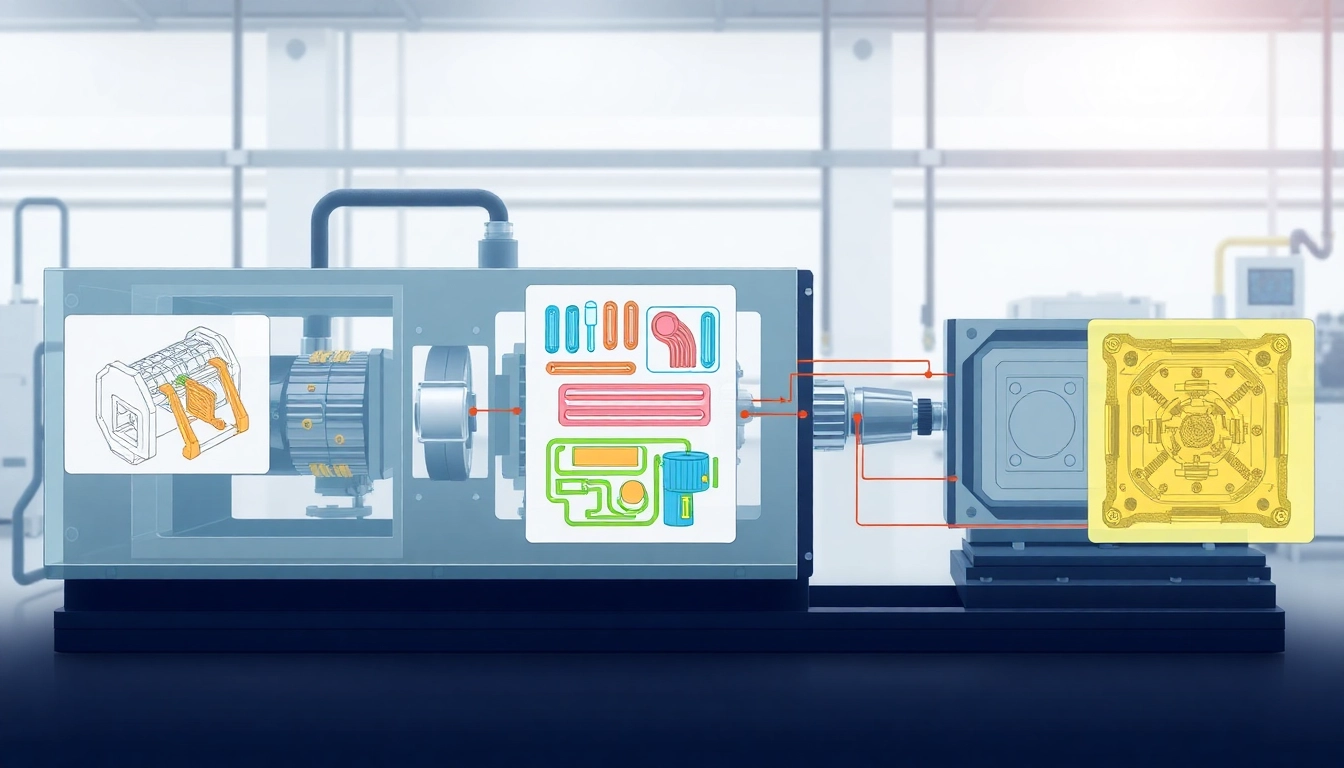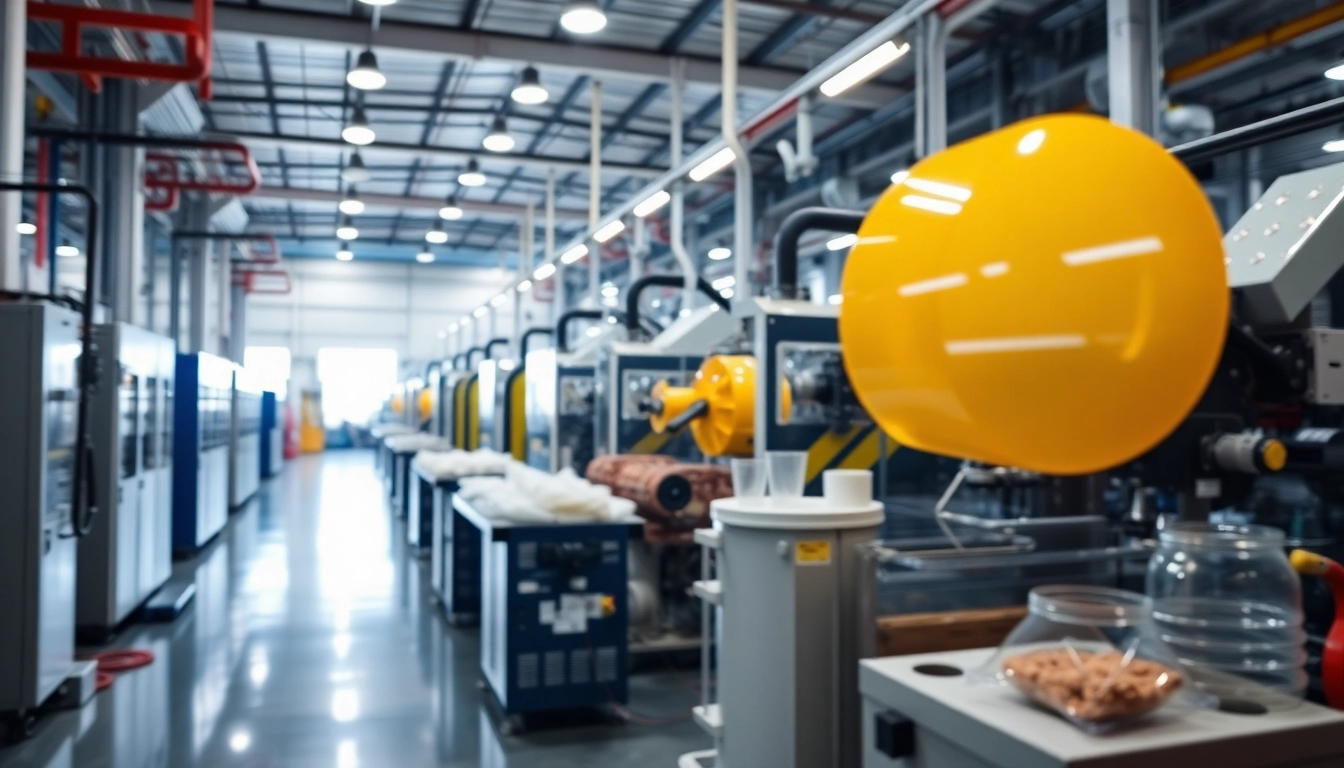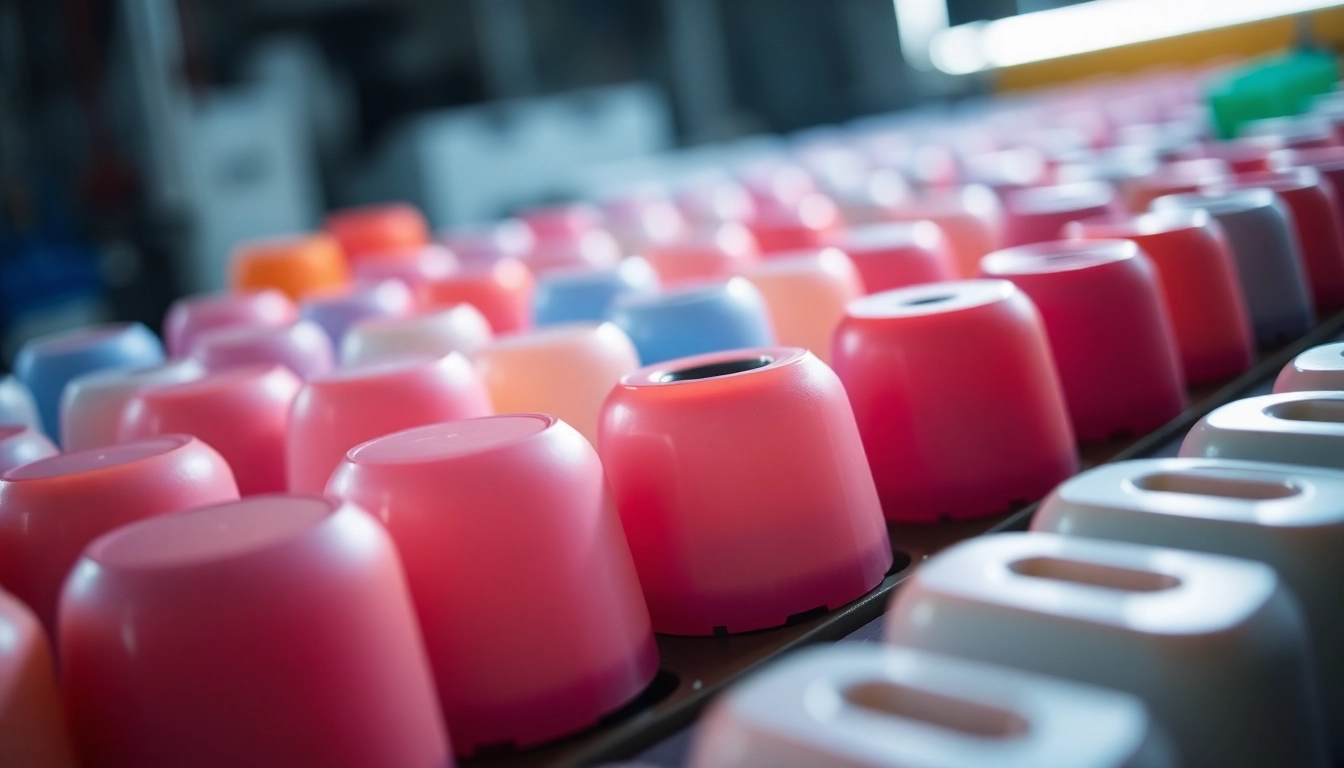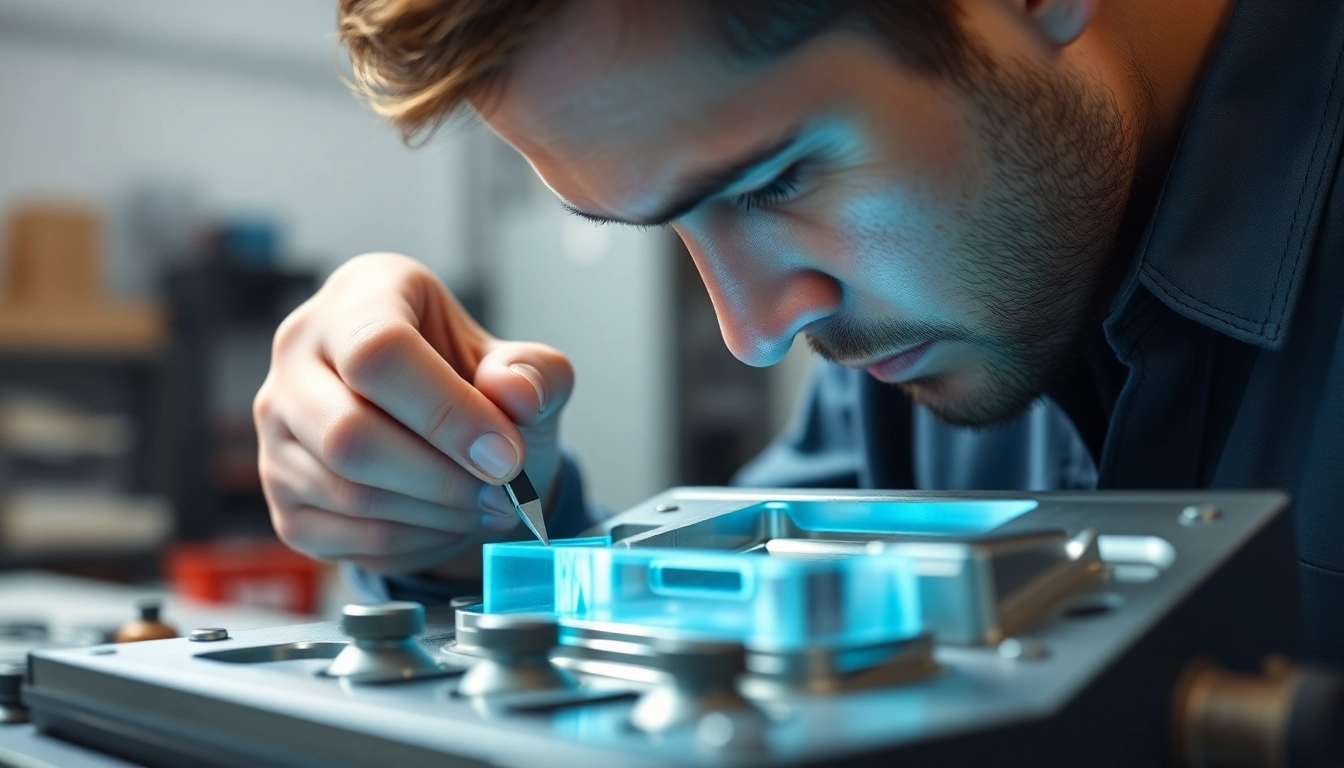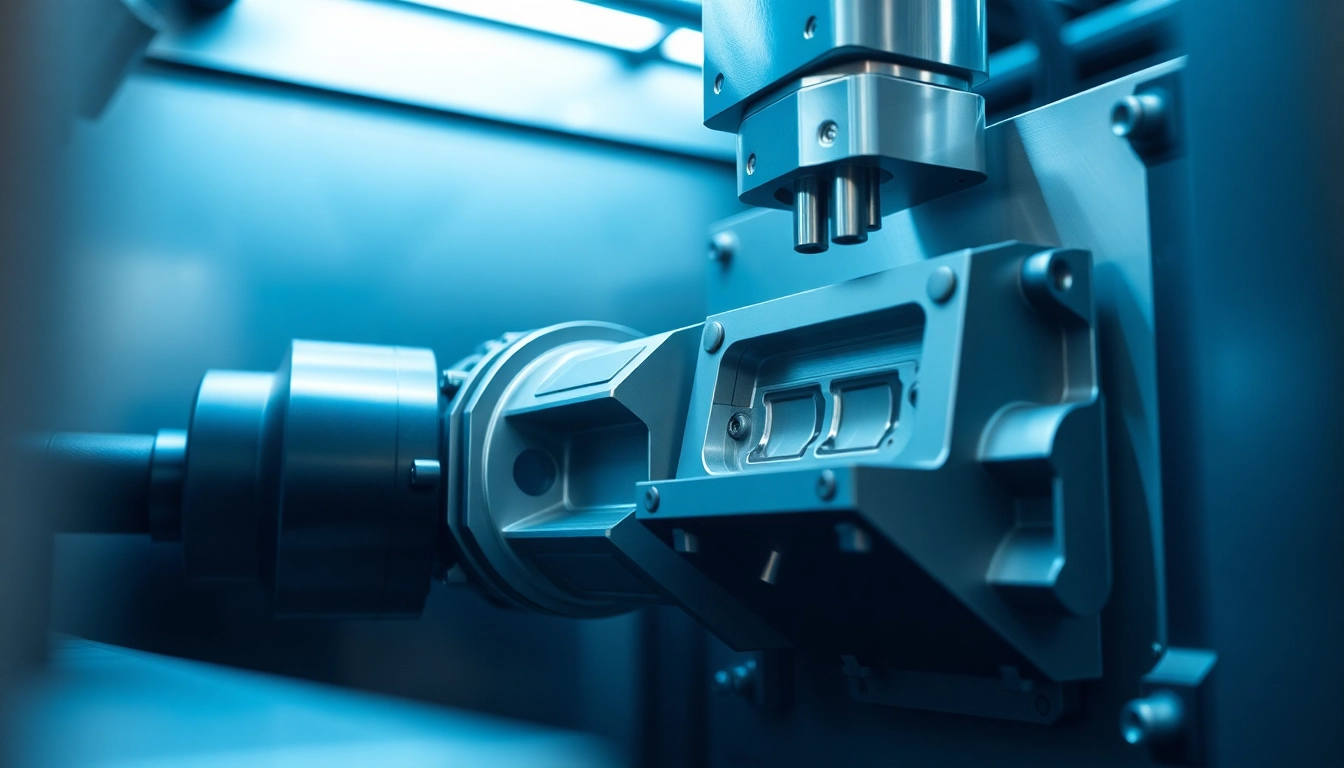Understanding Injection Molding Basics
Injection molding is a vital process in the manufacturing industry that allows for the mass production of intricately designed components. In essence, it involves injecting molten materials into a mold, where they cool and solidify to form a specific shape. This manufacturing method is widely adopted for its efficiency and versatility, and it predominantly uses various materials, including plastics, metals, elastomers, and many others. Injection molding can offer significant advantages in production time and product consistency but requires thorough understanding and precise execution.
What is Injection Molding?
Injection molding is a manufacturing technique that involves generating parts by injecting molten material into a mold, allowing it to cool and solidify. This process is notable for its efficiency, enabling the rapid production of large volumes of identical items. The method is not limited to a particular industry and finds applications across automotive, consumer goods, medical devices, and many more sectors. The machine that operates this process often consists of a hopper, a heated barrel, a screw mechanism, and a mold, which together create a seamless production method that minimizes waste and maximizes output.
Key Materials Used in Injection Molding
The materials used in injection molding are diverse and tailored to meet specific application needs. Some of the most common materials include:
- Thermoplastics: These are the most widely used materials in injection molding due to their ability to be re-melted and reformed. Examples include polyethylene, polypropylene, and polystyrene.
- Thermosetting Plastics: Unlike thermoplastics, these materials cannot be remelted once set. They are often used for more durable applications, such as epoxy resins or phenolic resins.
- Elastomers: These are flexible polymers that exhibit rubber-like properties, making them suitable for products requiring flexibility and resilience.
- Composites: These materials combine plastics with reinforcing materials like glass or carbon fibers, enhancing strength and durability while remaining lightweight.
The choice of material significantly impacts the properties of the final product, influencing its strength, weight, and resistance to various environmental factors.
Common Applications of Injection Molding
Injection molding is integral to many industries, producing a wide range of everyday items, including:
- Consumer Products: Items such as toys, containers, packaging, and furniture components.
- Automotive Parts: Interior and exterior components, including dashboards, paneling, and clips.
- Medical Devices: Components such as syringes, surgical instruments, and housings for medical equipment.
- Electronics: Casings, connectors, and components in devices from smartphones to appliances.
This versatility in applications stems from injection molding’s ability to create high-precision parts with complex geometries at a reduced cost and time compared to traditional manufacturing methods.
The Injection Molding Process Explained
Stages of the Injection Molding Process
The injection molding process can be broken down into several key stages:
- Clamping: The mold is securely closed, and pressure is applied to maintain the clamping force throughout the injection phase. This is crucial to prevent the molten material from escaping and ensures a good seal.
- Injection: The molten material is injected at high speed and pressure into the mold cavity. This stage requires precise temperature control to ensure the material flows correctly without degrading.
- Cooling: The injected material begins to cool and solidify within the mold. The cooling time varies based on the material used and the complexity of the mold design.
- Ejection: Once solidified, the molded part is ejected from the mold, usually with the help of ejector pins or plates that push the part out without damaging it.
This cyclical process can take anywhere from a few seconds to a couple of minutes, depending on the specific part being produced.
Choosing the Right Molding Techniques
To optimize production and meet specific product requirements, several molding techniques can be utilized:
- Standard Injection Molding: The conventional method suitable for general applications, producing high-quality parts.
- Thin-Wall Injection Molding: Used for lightweight applications requiring thicker walls, commonly found in packaging and consumer goods.
- Gas-Assisted Injection Molding: Enhances structural integrity by introducing gas into the mold during filling, reducing weight while maintaining strength.
- Insert Molding: Combines metal or other materials with plastic to produce a single integrated part, crucial for electrical components and assemblies.
The selection of the appropriate technique is imperative for achieving the desired outcomes in terms of quality, cost-efficiency, and production speed.
Factors Influencing Injection Molding Efficiency
Several key factors can impact the efficiency of the injection molding process:
- Material Properties: Variations in viscosity, thermal conductivity, and flow rates can alter the injection process, affecting cycle time and part quality.
- Mold Design: A well-designed mold that considers cooling channels, air vents, and part geometry will reduce cycle times and enhance product quality.
- Machine Calibration: Properly calibrated machines improve consistency in injection pressure, temperature control, and molding time, leading to fewer defects.
- Operator Training: Skilled operators can make real-time adjustments to the process for improved outcomes, identifying and mitigating any potential issues quickly.
By understanding and controlling these factors, manufacturers can greatly enhance the overall efficiency of their injection molding operations.
Design Considerations for Injection Molding
Best Practices for Mold Design
The mold design is one of the most critical elements in the injection molding process. Here are some best practices that should be considered:
- Uniform Wall Thickness: Ensure that the part has a consistent wall thickness to promote even cooling and minimize warping or defects.
- Mold Flow Analysis: Use simulation software to visualize how the material will flow through the mold, allowing for adjustments before physical tooling.
- Incorporate Draft Angles: Adding draft angles to part designs facilitates easier ejection from the mold and reduces wear on the mold itself.
- Consider Cooling Channels: Properly placed cooling channels can significantly reduce cycle times and maintain product quality.
Implementing these practices will help to streamline manufacturing and reduce costs associated with defects or rework.
Understanding Tolerances in Injection Molding
Tolerances are crucial in ensuring that molded parts fit together properly and meet design specifications. Tolerances in injection molding can be broadly classified into:
- Geometric Tolerances: Referring to the physical shape and features of the part, such as flatness or roundness.
- Dimensional Tolerances: Focusing on the overall size and location of features within specified limits.
- Mechanical Tolerances: Pertaining to properties such as hardness or flexibility that affect how the part performs in its application.
Understanding the necessity and implications of these tolerances can prevent costly issues in assembly and product performance.
Impact of Design on Manufacturing Costs
The design of a part significantly influences manufacturing costs through various factors. Some factors to consider include:
- Material Selection: Choosing a higher-cost resin can increase production costs, but may be necessary for achieving desired properties.
- Mold Complexity: Complex molds require more time and resources to manufacture which can drive up costs significantly.
- Production Volume: High-volume production can reduce the per-unit cost, while low volumes may not justify the setup costs.
- Post-Processing Needs: Consideration must be given to any additional finishing processes, such as painting or coating, that could add to the overall costs.
Careful planning and foresight in design can mitigate these costs and ensure more effective resource allocation during production.
Common Challenges and Solutions in Injection Molding
Identifying and Preventing Molding Defects
Despite its efficiency, the injection molding process can encounter several defects, including:
- Short Shots: Occur when not enough material fills the mold, leading to incomplete parts. Solutions include checking material flow rates and ensuring adequate injection pressure.
- Warpage: Results from uneven cooling or internal stresses; can be reduced by controlling cooling rates and maintaining uniform wall thickness.
- Bubbles or Voids: Caused by trapped air or moisture within the material, prevented by proper material drying and venting strategies in the mold.
Conducting thorough quality control checks throughout the process can help in identifying potential issues early, allowing for timely corrections.
Tips for Improving Production Quality
Quality control is paramount in injection molding to ensure products meet standards. Here are some effective strategies:
- Regular Machine Maintenance: Scheduled maintenance and checks can prevent downtimes and ensure optimal performance of your machines.
- Real-Time Monitoring: Employing sensors and software to monitor the injection process can help in identifying deviations from the norm, enabling immediate corrections.
- Operator Training: Investing in the training of personnel enhances their skills in handling machinery and troubleshooting issues, thus improving overall production efficacy.
Adopting these measures fosters an environment geared toward continuous improvement and excellence in quality.
Adapting to Material Changes and Trends
The injection molding sector is evolving, with new materials and innovations emerging constantly. Staying updated with trends enables manufacturers to remain competitive. Current trends to watch include:
- Biodegradable Plastics: Sustainability is becoming a priority; using biodegradable materials can tap into ethically-conscious markets.
- Advanced Material Compositions: Innovations in materials enable the production of lighter, stronger parts, enhancing overall product performance.
- Automation in Injection Molding: The rise of automation and robotics can streamline operations, reduce costs, and improve part quality.
Being adaptive to these changes can open new avenues for product development and market outreach.
The Future of Injection Molding Technology
Innovations Shaping the Future of Injection Molding
The future of injection molding technology is bright, with several innovations on the horizon that could revolutionize the process:
- 3D Printing Integration: Combining traditional injection molding with 3D printing can lead to faster prototyping and production cycles.
- Predictive Analytics: Utilizing big data and analytics can optimize production processes by predicting maintenance needs and minimizing downtime.
- Smart Molding Machines: The advancement of IoT-enabled machinery can allow for more precise control and monitoring of the molding process.
Such technological advancements promise to improve efficiency and reduce costs while enhancing product quality.
Sustainability Practices in Injection Molding
As global awareness of environmental concerns increases, sustainability practices in injection molding are becoming critical. Here’s how businesses can integrate sustainability:
- Recycling Programs: Implementing recycling initiatives to reuse scrap materials can significantly lower waste and production costs.
- Energy-Efficient Machinery: Investing in energy-efficient machines and processes will reduce power consumption and carbon footprint.
- Material Selection: Prioritizing the use of eco-friendly materials can appeal to a growing segment of environmentally conscious consumers.
By proactively adopting sustainable practices, manufacturers can not only improve their operational efficiency but also enhance their brand reputation.
Adopting Industry 4.0 in Injection Molding Operations
Industry 4.0 refers to the digital transformation of manufacturing processes through the rise of the internet of things and smart technologies. In the context of injection molding, the adoption of Industry 4.0 involves:
- Connected Systems: Integrating machines and production lines through networked systems allows for easier data acquisition and sharing.
- Automated Production Lines: Automation can enhance flexibility and adaptability while drastically reducing human error and increasing overall output.
- Augmented and Virtual Reality: Utilizing AR/VR for training and simulation purposes can enhance the understanding of complex processes and maintenance procedures.
Incorporating these technologies positions companies to leverage data and insights that can drive their operations toward greater efficiency and growth.
